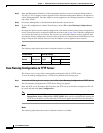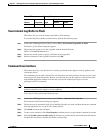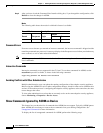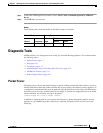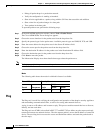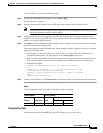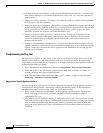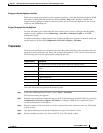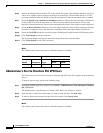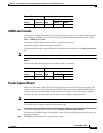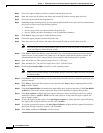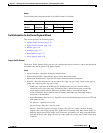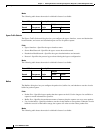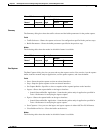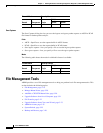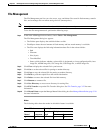
3-12
Cisco ASDM User Guide
OL-16647-01
Chapter 3 Defining Preferences and Using Configuration, Diagnostic, and File Management Tools
Diagnostic Tools
Step 6 Specify the minimum and maximum TTL values for the first probes. The minimum default is one, but it
can be set to a higher value to suppress the display of known hops. The maximum default is 30. The
traceroute terminates when the packet reaches the destination or when the maximum value is reached.
Step 7 Check the Specify source interface or IP address check box. Choose the source interface or IP address
for the packet trace from the drop-down list. This IP address must be the IP address of one of the
interfaces. In transparent mode, it must be the management IP address of the adaptive security appliance.
Step 8 Check the Reverse Resolve check box to have the output display the names of hops encountered if name
resolution is configured. Leave this check box unchecked to have the output display IP addresses.
Step 9 Check the Use ICMP check box to specify the use of ICMP probe packets instead of UDP probe packets.
Step 10 Click Trace Route to start the traceroute.
The Traceroute Output area displays detailed messages about the traceroute results.
Step 11 Click Clear Output to start a new traceroute.
Modes
The following table shows the modes in which this feature is available:
Administrator’s Alert to Clientless SSL VPN Users
This feature lets you send an alert message to clientless SSL VPN users (for example, about connection
status).
To send an alert message, perform the following steps:
Step 1 In the main ASDM application window, choose Tools > Administrator’s Alert Message to Clientless
SSL VPN Users.
The Administrator’s Alert Message to Clientless SSL VPN Users dialog box appears.
Step 2 Enter the new or edited alert content that you want to send, and then click Post Alert.
Step 3 To remove current alert content and enter new alert content, click Cancel Alert.
Modes
The following table shows the modes in which this feature is available:
Firewall Mode Security Context
Routed Transparent Single
Multiple
Context System
• • • • •



